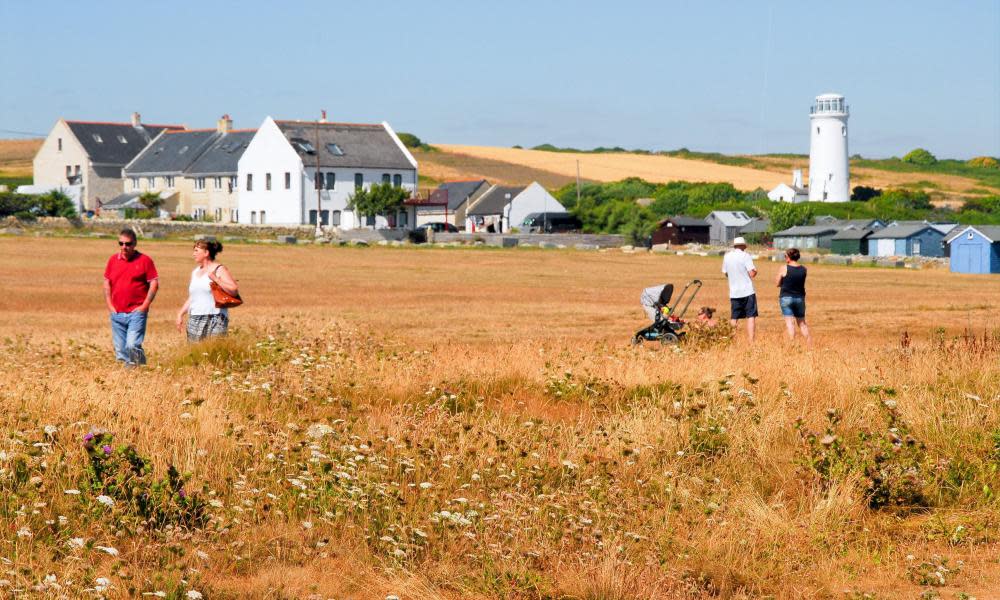Met Office issues UK heatwave alert on hottest day of the year

The Met Office has issued a heatwave warning and advised people to stay out of the sun for the rest of the week as it confirmed that Monday was the hottest day of the year so far.
The level three, amber heat health watch warning acts as an alert to health providers that extreme temperatures are on the way, which may affect the wellbeing of people in the UK.
The warning applies from 9am on Monday to 9am on Friday in the Midlands, south-east England and east England. It means there is a 90% probability that temperatures will hit 30C (86F) during the day and 15C at night for at least two days during that period.
The Met Office said that a temperature of 33.3C had been recorded at Santon Downham in Suffolk. The previous highest had been 33C at Porthmadog in north Wales on 28 June.
A Met Office spokeswoman said: “Away from northern England, dry and sunny weather should dominate through the week, but interspersed with heavy showers in afternoon and evening periods.
“Temperatures will be very warm or hot; very hot in the east. Thresholds could be breached in places from Monday onwards, with very warm and muggy overnight conditions.”
The average daily maximum temperature from 1 June to 16 July was 20.9C, much higher than expected at this time of year, prompting the Met Office to predict this summer (1 June to 31 August) could be record-breaking. Even if temperatures for the rest of July and August are average, it will still be one of the 10 hottest summers on record.
The Met Office advice for this week states: “Stay out of the sun. Keep your home as cool as possible – shading windows and shutting them during the day may help. Open them when it is cooler at night. Keep drinking fluids. If there’s anybody you know, for example an older person living on their own, who might be at special risk, make sure they know what to do.”
Firms are being urged to relax dress codes and keep offices cool to help workers cope with the heatwave. The TUC suggested allowing staff to work flexible hours to avoid travelling in the rush hour and letting workers wear lightweight clothes.
There are no restrictions for when the workplace becomes too hot. The TUC has been campaigning for a change in the law to introduce a new maximum indoor temperature of 30C, or 27C for those doing strenuous jobs.
Frances O’Grady, the general secretary, said: “It’s no fun working in a baking office or factory” and urged employers to do all they could to keep temperatures down.
The highest daily maximum average for an entire summer (June, July and August) was 21C in 1976, when there were standpipes in the street. This summer a hosepipe ban was introduced in Northern Ireland, although it has since been lifted, and another one is due to come into effect in north-west England on 5 August.
The Environment Agency has said water supplies in the rest of England should be sufficient, if resources are managed properly. However, it said the drop in river levels posed a threat to wildlife.
Last week, Public Health England advised people to keep out of the sun between 11am and 3pm and walk in the shade if possible. It urged people to carry water, apply sunscreen and wear a hat “if you have to go out in the heat”.
Several places in the UK have had 54 consecutive dry days, starting on 30 May, the Met Office said. They included some that have had less than 1mm of rain in that entire period – the longest such spell since 1969, when 70 days passed with no significant rainfall. The Met Office classifies less than 1mm of rain in a day as a “dry day”.
The dry spell has been most prolonged in East Anglia and south-east England, with the last day of very widespread rainfall for these regions being 29 May. Parts of the Midlands have also been very dry.

 Yahoo News
Yahoo News 
